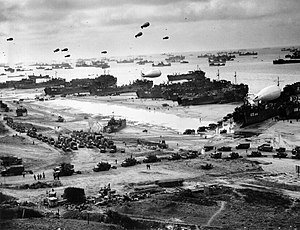May 15th, 1944: D-Day Planning by Allied Leaders
On May 15th, 1944, a pivotal meeting took place involving key figures such as Dwight D. Eisenhower, Bernard Montgomery, Winston Churchill, and King George VI. The purpose of this historic gathering was to finalize the plans for the D-Day invasion, codenamed Operation Overlord. This meeting played a crucial role in shaping the strategies that would ultimately lead to the Normandy landings on June 6, 1944, a significant turning point in the Allied victory during World War II.
The Significance of the Meeting
The meeting held on May 15th, 1944, marked a critical juncture in the planning of one of the most ambitious military operations in history. Operation Overlord, the code name for the D-Day invasion, required meticulous planning and coordination among the Allied leaders. The decisions made during this meeting would have far-reaching implications for the outcome of the war.
At the time of the meeting, the Allied forces were acutely aware of the formidable challenges they would face in executing the invasion of Normandy. The German forces had fortified the French coastline, and the success of the operation hinged on surprise, meticulous planning, and flawless execution.
During the discussions on May 15th, 1944, General Dwight D. Eisenhower, the Supreme Commander of the Allied Expeditionary Force, played a central role in presenting and refining the detailed plans for the invasion. His leadership and strategic acumen were instrumental in guiding the decision-making process.
Field Marshal Bernard Montgomery, a distinguished British military leader, brought valuable insights and expertise to the table. His experience and tactical proficiency contributed significantly to the formulation of the operational plans.
Prime Minister Winston Churchill, known for his resolute leadership during the war, provided unwavering support and strategic guidance during the meeting. His influence and vision were pivotal in shaping the broader strategic objectives of the Allied forces.
King George VI, the revered monarch of the United Kingdom, also played a crucial role in the discussions. His presence underscored the gravity of the decisions being made and symbolized the unity and determination of the Allied nations in the face of adversity.
The Planning and Decision-Making Process
The discussions on May 15th, 1944, delved into intricate details regarding the timing, logistics, and coordination of the impending invasion. The Allied leaders meticulously reviewed intelligence reports, assessed potential risks, and deliberated on the allocation of resources to ensure the success of Operation Overlord.
One of the key areas of focus during the meeting was the selection of the landing sites along the Normandy coast. The careful evaluation of various factors such as tides, terrain, and defensive fortifications was essential in identifying the optimal locations for the amphibious assault.
The Allied leaders also deliberated on the crucial aspect of deception and misinformation to mislead the German forces regarding the actual location and timing of the invasion. This strategy, known as Operation Bodyguard, played a significant role in ensuring the element of surprise during the D-Day landings.
Furthermore, the coordination of airborne operations, naval bombardment, and the subsequent amphibious landings demanded meticulous planning and synchronization. The allocation of air support, the establishment of beachheads, and the rapid buildup of forces on the French coastline were among the critical aspects addressed during the meeting.
The decisions taken on May 15th, 1944, laid the groundwork for the final operational plans that would culminate in the historic events of June 6, 1944. The unwavering resolve and collaborative spirit of the Allied leaders during this meeting were instrumental in shaping the course of the war.
Legacy and Historical Impact
The meeting of May 15th, 1944, stands as a testament to the meticulous planning, strategic foresight, and unwavering determination of the Allied leaders in the pursuit of victory. The decisions made during this historic gathering paved the way for the Normandy landings, which ultimately turned the tide of the war in favor of the Allied forces.
The success of Operation Overlord and the D-Day invasion marked a defining moment in World War II, showcasing the triumph of Allied unity, courage, and military prowess. The Normandy landings dealt a significant blow to the German forces and provided the momentum that would lead to the eventual liberation of Western Europe.
Today, the meeting of May 15th, 1944, serves as a poignant reminder of the sacrifices made and the strategic acumen displayed by the Allied leaders. It stands as a testament to the valor of the soldiers who participated in the D-Day invasion and the enduring legacy of the Allied victory in World War II.
Conclusion
The meeting held on May 15th, 1944, by key Allied figures including Dwight D. Eisenhower, Bernard Montgomery, Winston Churchill, and King George VI, played a pivotal role in shaping the final plans for the D-Day invasion, codenamed Operation Overlord. The decisions made during this historic gathering were instrumental in orchestrating one of the most remarkable military operations in history, ultimately leading to the Allied victory in World War II.

